In this era of fantasy sports, we have access to an abundance of stats. Some are as simple as HRs and Ks, and some are a bit more advanced like CSW and xwOBA. However, there is an aspect of fantasy that can get overlooked, like changes to a ballpark. The challenging part of this is understanding how the modifications will impact a team’s run environment.
Some changes are easy to spot, like moving the fences in will produce more HRs. Conversely, it can also decrease BABIPs leading to lower batting averages. Why might you ask? Well, a defender will be able to cover more of the outfield and potentially get to more batted balls. In the end, park factors are not an exact science and sometimes takes a few years for true adjustments to settle.
During this most recent offseason a pair of stadiums altered their field. The Toronto Blue Jays and Detroit Tigers are the two teams under the microscope. Let’s dive into what changes were made and the impacts of this upcoming season.
The Rogers Centre (Toronto Blue Jays)
Toronto made significant changes to several aspects of its home park. Not only did they bring fences in, but they also changed wall heights. Below is a mockup from the organization that depicts exactly where the new construction occurred.
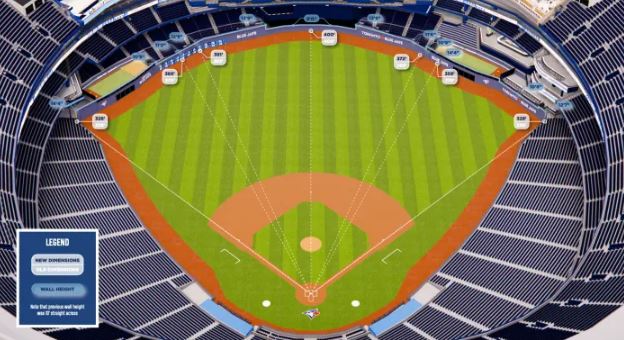
I know what you’re thinking. This looks like a baseball diamond. Well, let’s take a look at the dimensions before and after renovations.
First, what stands out is the fences were brought inward to home plate. Although, the depth of the left and right field lines didn’t get any adjustments, nor did center field. What really got impacted was the power alley to right-center field. For a point of reference, last year, left-handed hitters pulled 1670 batted balls 359 ft while only 1169 batted balls traveled more than a projected 379 ft. Theoretically, we should see a nice bump in HRs to the right field in Toronto.
But what about the wall heights? With most heights increasing, a batted wall will take a bit more oomph to clear the wall. However, the only part of the park that didn’t move in and raised its height was down the line. This will potentially lead to more doubles.
So, what does a savvy team like Toronto do? They bring in a trio of left-handed bats (Daulton Varsho, Brandon Belt, and Kevin Kiermaier) to not only balance the lineup but potentially add more thump to the, already, star-studded lineup. Below is a spray for each player’s HRs since the start of 2019.
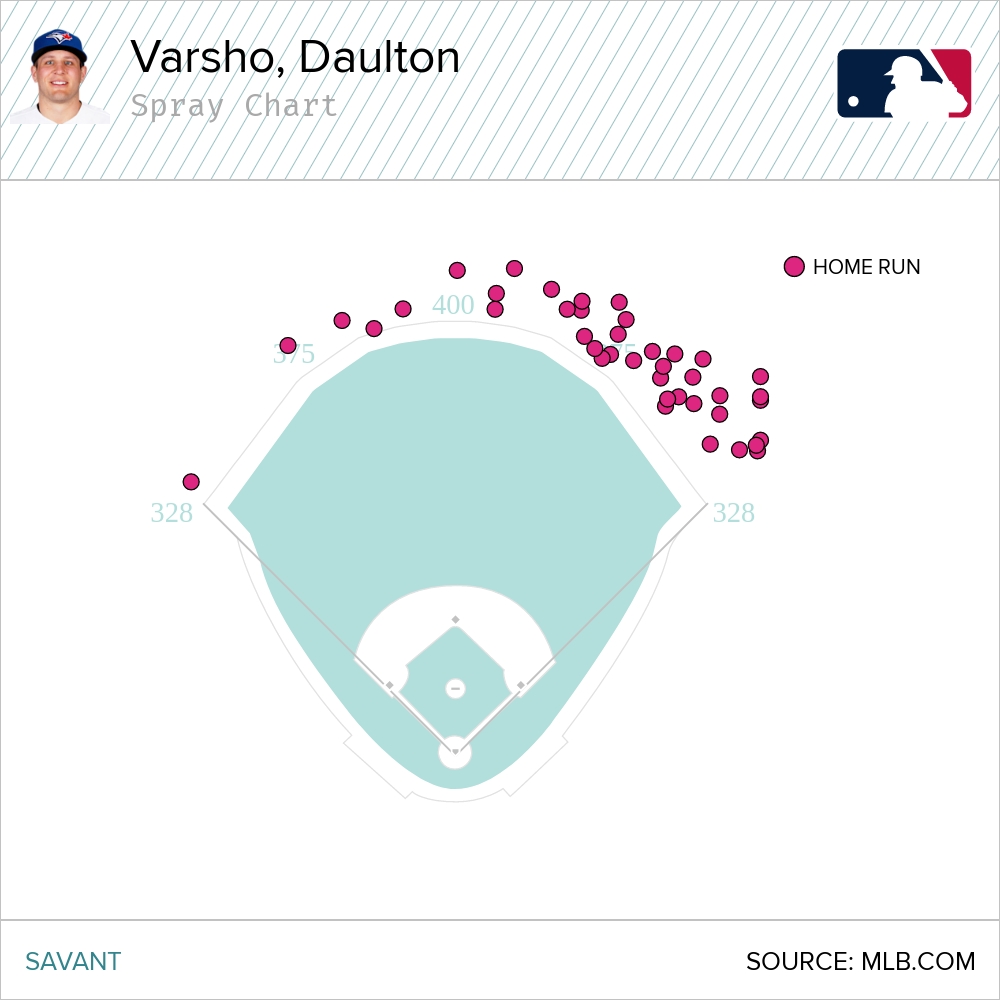
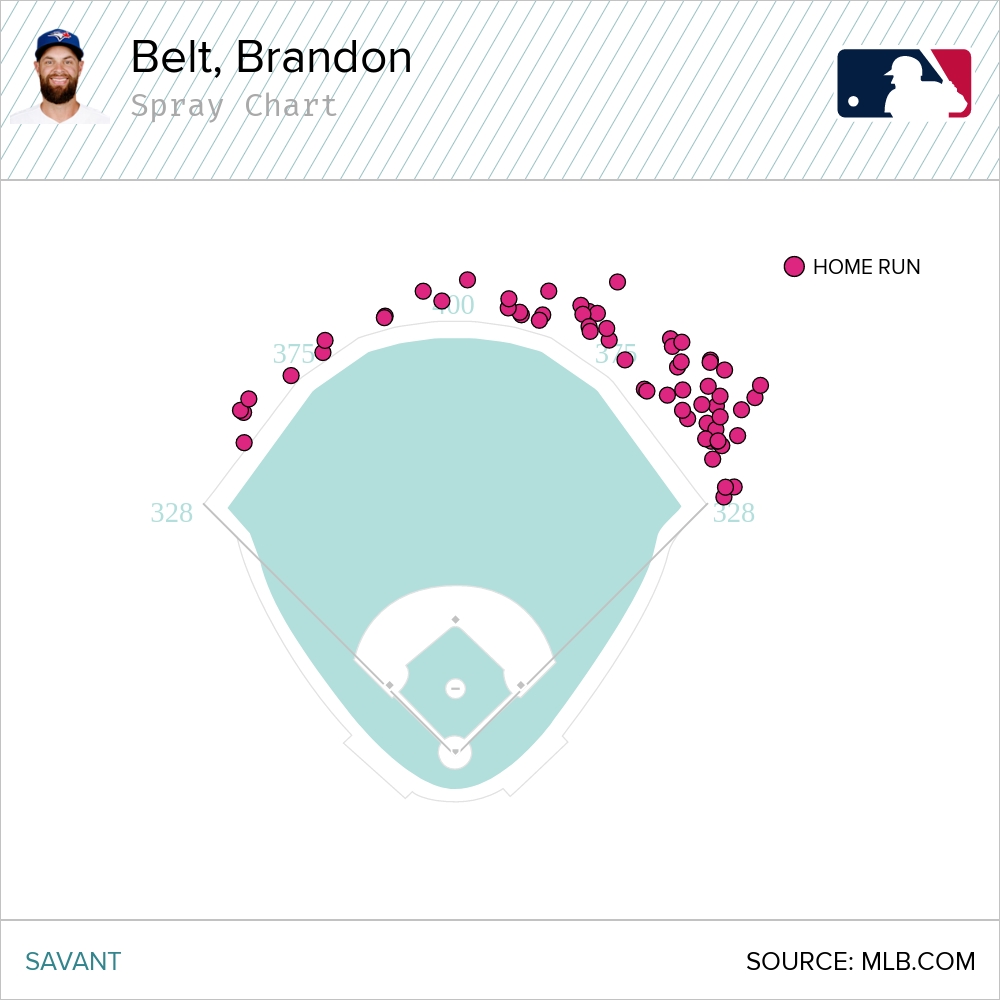
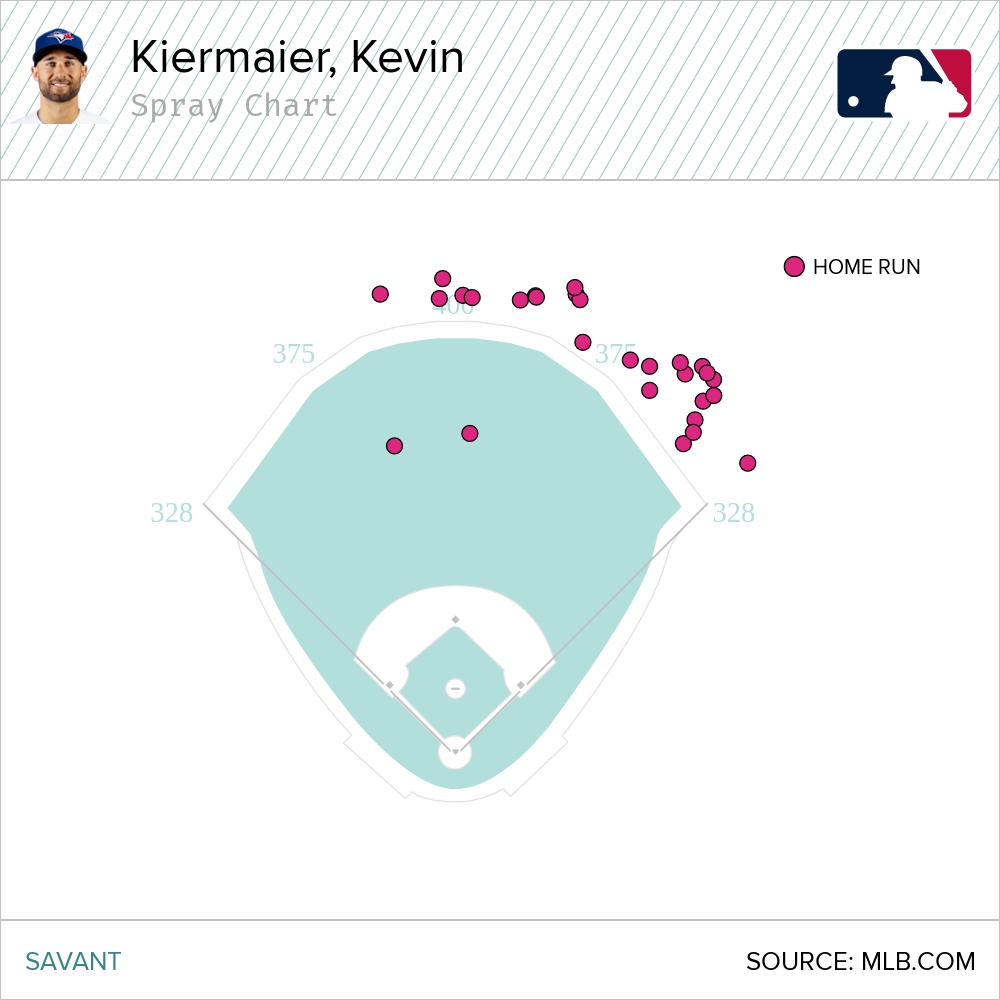
What do they all have in common? Bingo! They pull most of their HRs for power to the right-field side. When you see an upcoming series in Toronto, target any left-handed bats that will pull the ball. However, in general, the Rogers Centre is going to be a hitting haven.
On the other side, this could be a scary place to pitch. Starting pitchers on the road will square off against the stacked Blue Jays lineup, and it would appear the park will favor batters. If you step back and look at 2022, Toronto pitchers allowed the fourth-most (102) HRs at home and 22nd (78) HRs on the road. Now, with the fences in? YIKES! Perhaps this is why the Blue Jays brought in Chris Bassitt, who carried a near 50% ground ball rate and 22.6 HC%(87th percentile).
Comerica Park (Detroit Tigers)
Detroit’s changes were far more subtle than Toronto’s. Instead of fully shifting all the walls to each field, the Tigers elected to only bring the center field fences in. Moving the fences inwards ten feet still makes Comerica Park one of baseball’s most-cavernous places. In fact, according to Baseball Savant, Comerica was one of the worst sites for power.
Where they made more impactful changes was the wall height. As you can see from the photo below, the center field and the right-field line decreased by 1.5 feet.
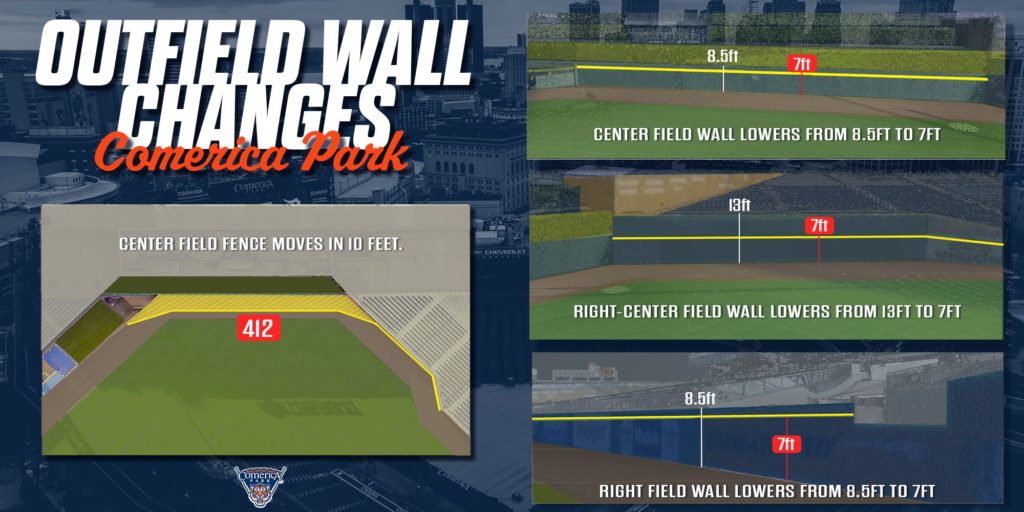
Additionally, the right-center field wall was nearly cut in half by losing six feet. The lowered fences should produce more playable balls for any rangy outfielders that can steal a HR. But what will certainly stay in play is the extra-base hits. Given the nature of the deep fences, even a wee bit smaller, the outfield space to cover allows for plenty of two-gappers.
With the fences only coming down a significant amount in right-center field, I pulled data for all left-handed batters. My theory is we might be able to find someone from the projected starters for Detroit that’ll benefit. Below are the five left-handed Tigers’ batters and the MLB AVG.
Riley Greene stands out among the crowd. There is room for improvement since he didn’t do a stellar job elevating the ball. Furthermore, when you look into his expected HRs, Greene hit five HRs but was expected to hit 9.1 HRs. With some minor park adjustments, he could wind up with a few more HRs than projections show.
On the opposite end of the spectrum, Detroit pitchers gave up a significant amount of HRs on the road (96 HR), as opposed to inside Comerica (71 HR). While the park will play a little better for power, it’s still massively a pitchers’ park. Stream at Comerica with confidence!
Photos courtesy of MLB | Adapted by Aaron Polcare (@bearydoesgfx on Twitter)
